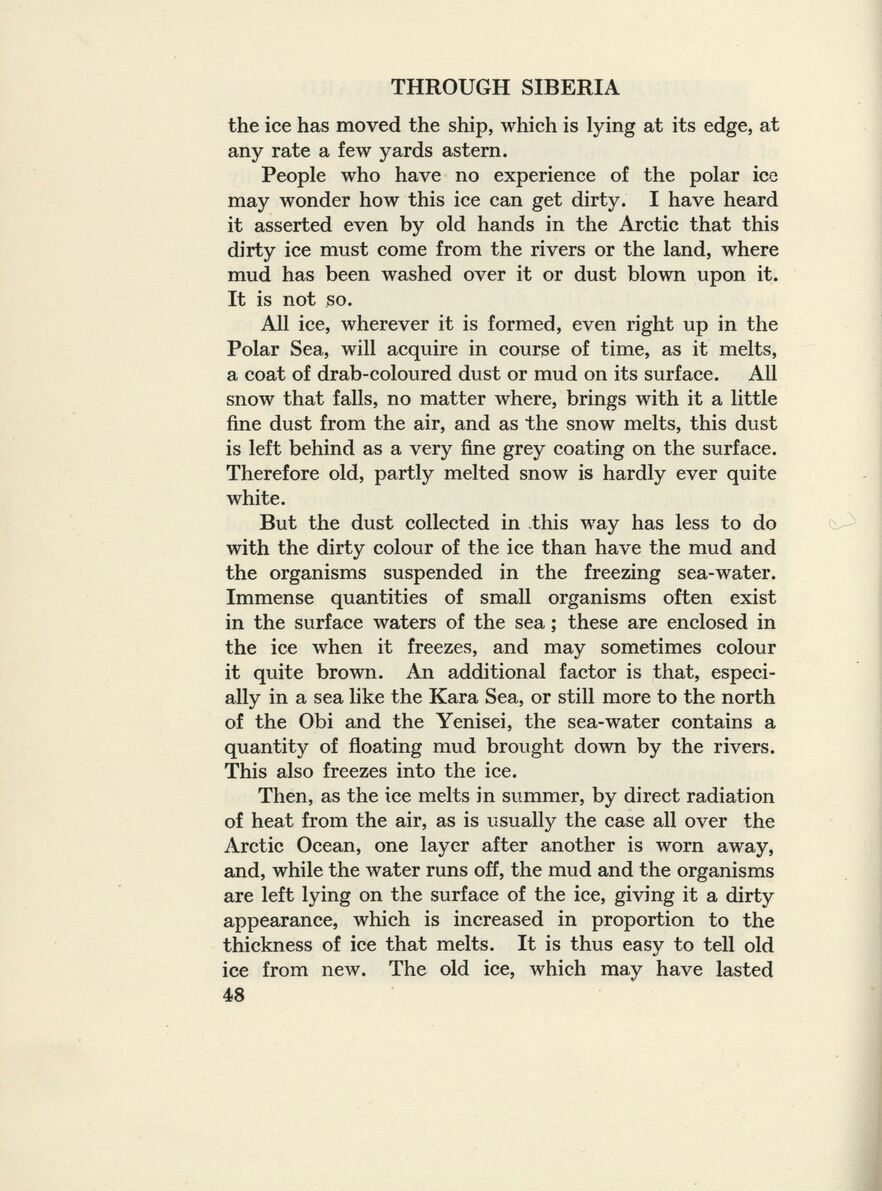
Full resolution (JPEG) - On this page / på denna sida - III. Through the ice northward along Yamal

<< prev. page << föreg. sida << >> nästa sida >> next page >>
Below is the raw OCR text
from the above scanned image.
Do you see an error? Proofread the page now!
Här nedan syns maskintolkade texten från faksimilbilden ovan.
Ser du något fel? Korrekturläs sidan nu!
This page has never been proofread. / Denna sida har aldrig korrekturlästs.
THROUGH SIBERIA
the ice has moved the ship, which is lying at its edge, at
any rate a few yards astern.
People who have no experience of the polar ice
may wonder how this ice can get dirty. I have heard
it asserted even by old hands in the Arctic that this
dirty ice must come from the rivers or the land, where
mud has been washed over it or dust blown upon it.
It is not so.
All ice, wherever it is formed, even right up in the
Polar Sea, will acquire in course of time, as it melts,
a coat of drab-coloured dust or mud on its surface. All
snow that falls, no matter where, brings with it a little
fine dust from the air, and as the snow melts, this dust
is left behind as a very fine grey coating on the surface.
Therefore old, partly melted snow is hardly ever quite
white.
But the dust eollected in this wray has less to do
with the dirty colour of the ice than have the mud and
the organisms suspended in the freezing sea-water.
Immense quantities of small organisms often exist
in the surface waters of the sea ; these are enclosed in
the ice when it freezes, and may sometimes colour
it quite brown. An additional factor is that, especi
ally in a sea like the Kara Sea, or still more to the north
of the Obi and the Yenisei, the sea-water contains a
quantity of floating mud brought down by the rivers.
This also freezes into the ice.
Then, as the ice melts in summer, by direct radiation
of heat from the air, as is usually the case all over the
Arctic Ocean, one layer after another is worn away,
and, while the water runs off, the mud and the organisms
are left lying on the surface of the ice, giving it a dirty
appearance, which is increased in proportion to the
thickness of ice that melts. It is thus easy to tell old
ice from new. The old ice, which may have lasted
48
<< prev. page << föreg. sida << >> nästa sida >> next page >>